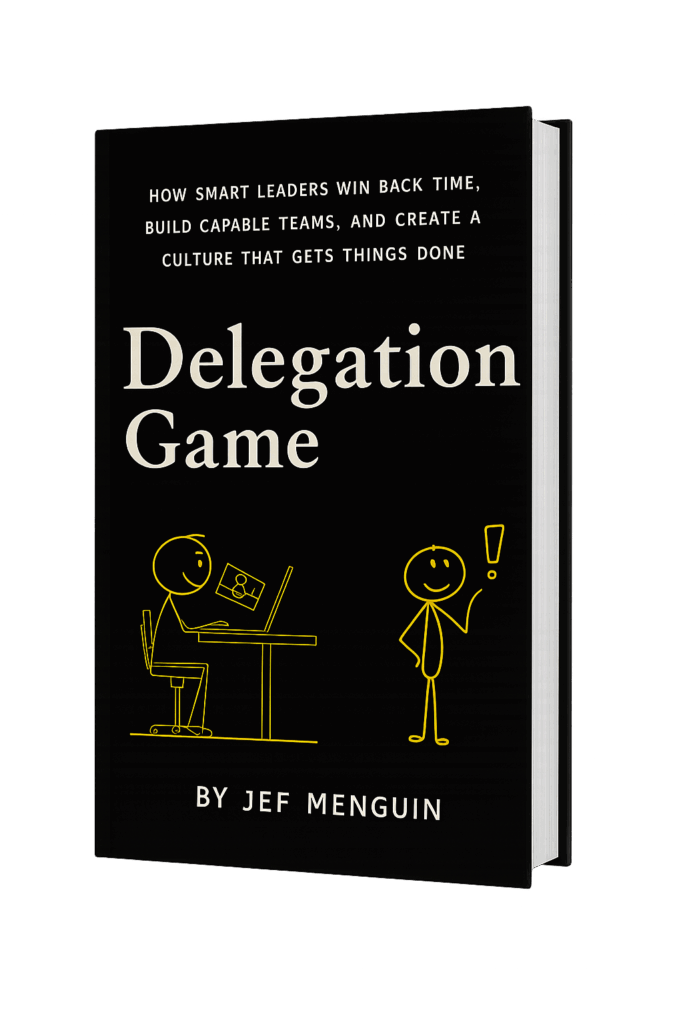Every company has policies. Thick handbooks. Posters on the wall about values. But ask employees what really drives behavior at work, and you’ll often hear something different.
“Don’t give your boss bad news.”
“Keep your head down if you want to get promoted.”
“Feedback? That only happens during performance reviews.”
These aren’t in any manual. Yet everyone knows them. And often, they shape culture more than any official policy.
These are the unwritten rules. Invisible, unspoken, and dangerous—because they tell people how things really work.
Everyday Examples of Unwritten Rules
You’ve seen these before. Think about your own workplace:
- “Don’t leave before your boss.” Even if your work is done, you stay late just to look busy.
- “Speak only when spoken to.” Junior staff keep quiet even when they see a better solution.
- “Promotions are for loyalty, not results.” The people who play politics climb faster than the ones who deliver.
- “Mistakes must be hidden.” Instead of learning, teams cover up problems to avoid blame.
None of these appear in HR policies. Yet they guide behavior every day.
When Unwritten Rules Take Over
A few years ago, I worked with a team that looked fine on the surface. They hit their deadlines. Meetings were polite. There was little conflict. But something felt wrong.
After a few candid conversations, the truth emerged: the unwritten rule was “Don’t challenge your manager.” Even when employees saw flaws in a plan, they stayed silent. They nodded, took notes, and whispered their doubts after the meeting.
The outcome? No new ideas. No healthy debates. Just compliance. Over time, performance dropped, morale dipped, and the most talented people quietly resigned.
Not because of poor pay. Not because of weak systems. But because of the invisible rule that told them: “Your voice doesn’t matter.”
Unwritten rules are like gravity. You don’t see them, but they pull on everything.
Why They’re Dangerous
Official rules are easy to spot. You can read them, question them, even rewrite them. Unwritten rules? They hide in the shadows. People follow them automatically—because breaking them feels unsafe.
That’s why they’re so dangerous:
- They reward conformity and punish initiative.
- They normalize fear, keeping real issues unspoken.
- They kill innovation, because “that’s how it’s always been done.”
- They erode trust, as employees see the gap between the posters on the wall and the reality in the hall.
A single unwritten rule can undo months of HR initiatives. You can launch a new performance system, but if the rule is “Feedback only happens annually,” it won’t matter. You can promote values of honesty, but if the rule is “Don’t contradict your boss,” truth never makes it to the table.
How to Recognize an Unwritten Rule
Sometimes, the best way to spot an unwritten rule is to listen for the whispers.
- What do people joke about? Office humor often reveals hidden norms.
- What do new employees learn quickly? They ask, “How are things really done here?” and the answers they get are the unwritten rules.
- What do people avoid talking about? Silence often hides the strongest rules.
Here’s a quick definition worth remembering:
Unwritten rules are invisible norms that quietly guide behavior—often more powerful than written policies.
What Happens When You Flip Them
The hopeful part is this: unwritten rules lose their grip the moment you name them.
I once worked with a company where the unspoken norm was “Don’t give bad news upward.” Leaders only heard problems after they became crises. Employees thought they were protecting themselves.
We flipped it with a simple new rule: “Bad news first.” Leaders began asking, “What am I not seeing?” in every meeting. At first, employees hesitated. But slowly, people started speaking up. Within months, projects became smoother, risks were spotted earlier, and trust in leadership grew.
That’s what happens when secrecy is replaced with visibility.
Imagine if your workplace replaced:
- “Feedback only happens during annual reviews” → with “Feedback happens at the moments that matter most.”
- “Conflict is dangerous” → with “Conflict creates clarity.”
- “HR is here to say no” → with “HR starts with yes—with conditions.”
These aren’t just slogans. They’re flips—short, verbalizable shifts that people can live by.
Try This With Your Team
Here’s a simple action you can try right away.
At your next huddle, ask your team:
👉 “What’s one unwritten rule we follow here—and is it helping us or holding us back?”
Don’t argue. Just listen. Capture what they say. You’ll be surprised how quickly people open up once the question is asked.
Sometimes, naming the rule is enough to spark a conversation that weakens its power.
Quick Examples of Unwritten Rules and Their Flips
| Unwritten Rule | Flip the Rule |
|---|---|
| Feedback only happens during annual reviews | Feedback at the moments that matter most |
| Don’t contradict the boss | Safe spaces for honest dialogue |
| Promotions are for loyalty | Reward performance and outcomes |
| Conflict is dangerous | Conflict creates clarity |
| HR is here to say no | HR starts with yes—with conditions |
FAQs About Unwritten Rules
Isn’t this just culture?
Not exactly. Culture is the big picture—values, identity, behaviors. Unwritten rules are the day-to-day shortcuts that shape culture in practice.
Can frontline employees really change them?
Yes. Some of the most powerful shifts I’ve seen started at the edges. A single ritual, like ending meetings with a “wins and thanks” round, can spread across an entire company.
What if leaders reinforce the old rules?
Then start small. Model the flip yourself. Results get noticed, and leaders are often the first to follow when they see something working.
How long does it take to change them?
It varies. Some flips take weeks to spread, others take months. But once people see a better rule in action, it tends to stick.
Breaking the Rules, Building the Shift
The biggest problems in HR rarely come from what’s written down. They come from the invisible rules people carry in their heads. But once you surface them, you can flip them—and start building the culture you really want.
So here’s my challenge to you:
👉 Spot one unwritten rule in your team this week. Is it helping you—or holding you back?
Because culture doesn’t change with posters or slogans. It changes when unwritten rules are broken—and replaced with better ones.
Take the Next Step
👉 Download the Rule-Breakers Kit and get the tools to spot and flip the rules holding your team back.
👉 Or join our Team Bayanihan workshops to surface and shift the unwritten rules shaping your culture.
Once you break the rules that no one talks about, you free your people to build the culture you’ve always wanted.


